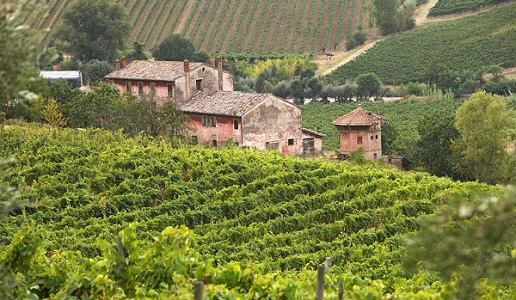Romagna Sangiovese, the new frontier

The practice of indicating its subzones on the label continues to increase in step with that of the overall quality level of production.
Serra, Brisighella, Modigliana, Marzeno, Oriolo, Castrocaro, Predappio, Meldola, Bertinoro, Cesena, San Vicinio and Longiano are not stops on a hypothetical rail line between Imola and Rimini. They are the subzones of the Romagna Sangiovese that have been recognized in regulations governing the appellation’s production since 2011 and, should propose changes be adopted, this denomination will be enriched further with three more subzones, one in Imola and two in the province of Rimini. The wine, especially in the Riserva version, has achieved a surprising level of overall quality.
This comes as no real surprise, however, and already in the 1970s Luigi Veronelli was talking about the Sangiovese “delle Rocche”, wines from the hills south of the Via Emilia, which were distinctly different from the other wines of the area. At most, what was a surprise was that the subzones were not highlighted in the DOC regulations beforehand. A half a century later, and for several years now, the subzones have been indicated by a growing number of estates and naming the subzones has underscored the wine’s higher level of quality.
One must not forget the historic rapport between Romagna and Sangiovese, one which is as old as the one the varietal has with Tuscany. The basic difference is that Tuscan wines made from Sangiovese have names like Chianti Classico, Brunello di Montalcino, Vino Nobile di Montepulciano and Morellino di Scansano, whereas in Romagna they are just called Sangiovese. In other words, it is the name of the varietal that prevails and the tradition behind these wines has always been that they were made as single-grape wines (even if regulations allow for it to have up to 15% of other varietals), a practice that has only more recently been adopted elsewhere.
If it is true, and it is, that the cultivation of the Sangiovese varietal spread at the same time in Tuscany and Romagna, evidence shows this occurred between the 16th and 17th century, it is equally true that south of the Apennine mountains the practice was to give a wine the name of where it was produced, even if it was as vast as Chianti, while in the north they used the name of the grape.
However, Romagna is also an indication of a variety of territories and extremely diversified subzones. For years now, it has been possible to drink some top quality Romagna Sangiovese Superiore or Riserva. Among wine lovers, it was a common practice to distinguish between the wines of Modigliana, Predappio, Marzeno and Bertinoro, thanks also to some particularly skilled winemakers, even before regulations allowed for indicating the subzone on the label. And the differences between these wines are as evident as those between a Vino Nobile and a Brunello or between Chianti Classico and Chianti Rufina.
By indicating the subzones on the label, the quality levels of Romagna Sangiovese have been highlighted and protected in a more efficient way, just as many had hoped for. For sure, what we have been witnessing is a shift in gears, the opening of a new frontier and a concrete opportunity for wines that at times are truly formidable.

 Italiano
Italiano







